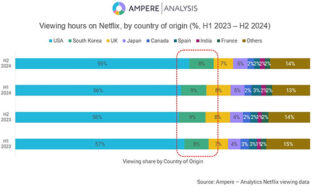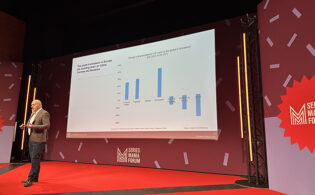According to data from Ampere Analysis, total revenues from streaming platforms in Europe have overtaken public-service broadcasting revenues for the first time.
Streaming revenues across subs and advertising are projected to reach €38.4 billion by 2029, a 37-percent boost, led by the U.S. majors, notably Netflix. Public-service revenues, consisting of license fees, taxes and advertising, meanwhile, are expected to be flat, inching up just 1 percent to €27.9 billion by 2029.
The gains for the global SVOD giants are being driven by ad tiers—they will account for 8 percent of European revenues for those services by 2029—as well as price hikes.
The crunch on PSB funding is worrying given their crucial support for the production ecosystem—pubcasters commissioned 43 percent of all titles in Europe last year. Pubcaster BVOD services are key for retaining their relevance; they already ranked as the second most-used streaming video platforms in Q3 2024 in the U.K., Denmark and Finland. In Sweden and Norway, the PSB platforms were third.
Sam Young, analyst at Ampere Analysis, said, “While Ampere’s projected public TV revenue growth represents a challenging outlook, public-service broadcasters remain a crucial stabilizing force in the European TV landscape. To remain competitive amid shifting viewing habits, and in the face of global streamers, PSBs must prioritize the development of their streaming platforms and find innovative ways to operate within limited and often uncertain funding structures. Forming ambitious strategic partnerships can enable them to continue to produce high-quality content at lower costs and expand their audience reach. However, local governments must recognize the need for financially sustainable models, especially as broadcasters face rising content costs, driven by increasing competition from global streamers. Adequate funding is not only essential for PSBs to keep investing in distinctive programming and fulfilling their public service remits, it is also necessary to support the wider European production sector.”






